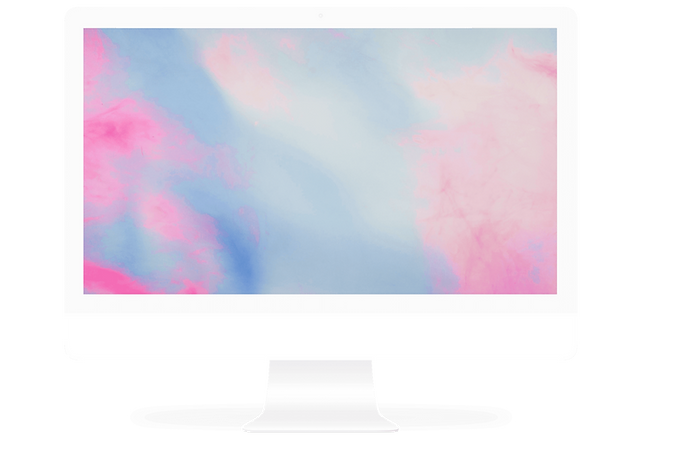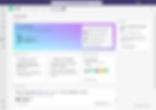Microsoft
Viva Insights
Improving effective meeting
feedback for leaders

01 Overview
Type
UX Research
UX Design
Visual Design
Duration
Team
Kristen, Microsoft Leap UX Design Apprentice
Chelly, Managing Designer
Tor, Visual Designer
Shruti, Principal PM
5 months
Microsoft Viva Insights
Stakeholder
02 Background
The Product
Microsoft Viva Insights empowers managers and leaders with insights that identify opportunities to improve wellbeing, engagement, and effectiveness across organizations. Insights provides visibility into work patterns that can lead to burnout and stress such as meeting overload, after-hours work, or too little focus time.
The Opportunity
At the beginning of the COVID-19 pandemic, many companies were transitioning to remote and hybrid work and meeting fatigue was on the rise. How could Viva Insights empower meeting organizers and managers to host effective and inclusive meetings in-person, remotely, and in hybrid settings while avoiding team burnout?
The Hypothesis
A Meeting Habits dashboard with manager and leader insights around effective meeting habits and culture that's based on employee feedback, meeting effectiveness ratings, and praise.
High-level Goals
Up-level
Improve MVP of Meeting Habits dashboard
Envision
Develop future direction of Meeting Habits
Target Personas
While there are more than two personas for this feature, our target personas for the Meeting Habits dashboard redesign were Meeting Organizers and Managers.

Focus Areas
Although I redesigned the entire Meeting Habits dashboard over 5 months, there were two key areas of focus, supported by evidence from previous research conducted by the PM:
"Review your meetings" dashboard card
Meeting Habits dashboard information architecture

03 Research
The Problem Space
Preliminary customer and market research showed that meeting fatigue had only worsened due to remote work, and since the beginning of the COVID 19 pandemic, the general number of meetings across companies had increased as colleagues tried to stay in touch and work virtually. Managers and meeting organizers had a desire to prevent meeting fatigue and burnout, but had a lack of meeting feedback to inform insights and actions.
Landscape and market research showed:
Effective meetings start and end on time, follow agendas, and have debrief processes
Specific and actionable meeting feedback is critical for improving meeting effectiveness
User Interview Questions
I worked with a Researcher on the Viva Insights team to prep my interview script and questions for a series of 6 moderated user interviews with managers at medium and large companies.
Interview questions focused on:
What would make the existing Meeting Habits dashboard more useful to users?
Which elements of the Meeting Habits dashboard are most valuable to users?
What impacts a meeting attendee's decision to provide feedback?
What type of meeting feedback is most useful and likely?
Current-state Pain Points
Participants from both user interviews and the unmoderated study were shown the current-state Meeting Habits dashboard for feedback. Some of the key pain points included:
Lack of contextual information to help users apply insights to their meetings
Confusion about the meaning of the meeting rating feature
Difficulty finding additional meeting information in the meeting carousel

Unmoderated Study
From user interviews, I learned that Meeting Organizers and Managers want to know how their meetings are doing overall, but it was especially important for them to have the ability to review details about individual meetings. In an unmoderated study with 59 participants on UserTesting.com, I tested the current Meeting Habits dashboard (B) with two additional patterns: individual cards (A) and a list (C).
Both A and C options were preferred over the current-state carousel pattern.

Key Research Learnings
To synthesize the 6 hour-long customer interviews and the unmoderated user study, I used affinity mapping to group and synthesize the key research learnings and discovered ways to improve the current Meeting Habits dashboard design:
Users want more information and actionable insights
Users want to take quick action to improve
Providing feedback depends on comfort level
Feedback tools should be customized

How might we...provide more information without overwhelm; help users take quick action to improve; and help users reflect and apply insights?
04 Ideation
Meeting Cards Progressive Disclosure
To maintain the card structure and layout used throughout the Meeting Habits dashboard and across Viva Insights, I decided to explore the individual card pattern through low-fi wires.
I first considered a 'view more' progressive disclosure pattern in the hopes that using a button rather than carousel arrows would be more common for users. However, by expanding vertically down the screen, this pattern would push other information below the fold.

I then considered a 'dialog' as a form of progressive disclosure for individual meeting cards. This would keep all related meeting cards above the fold, but feedback from a team design critique made me reflect on whether a user would want to see detailed meeting information in a dialog.

The pattern I ultimately landed on was an L1 progressive disclosure that would take users to a secondary page upon clicking on the card. The L1 view would show all of their past meetings. This pattern proved the easiest to skim, provided space for unlimited meeting cards, and can be sorted and/or filtered.

Information Architecture
I then turned my focus to improving the information architecture of the Meeting Habits dashboard to better align to fit users' expectations and mental models.




Lightbulb moment!
Users want to reflect on their meetings prior to taking action, to better understand why the action is important.
After this realization, I finalized the information architecture of the Meeting Habits dashboard.

05 Design
Funded Feature Requests
Towards the end of the project, I received additional feature requests from my PM for items that would receive funding that semester. I worked to incorporate the following features in the overall redesign:
Top-action feed
Meeting-related praise
When considering how to incorporate the top-action feed, I realized that reviewing meetings and taking action to improve are really two separate user goals that I needed to solve for. Users want to have a history of all of their previous meetings to review and learn from or for use in annual reviews, whereas top actions are very timely and relevant and can be used to improve meetings.
I created a top-action feed using a list pattern, since this was the preferred option in the preference test, and placed it in the third row to maintain the information architecture. I then added a praise entry card to the second row, and lastly, added an entry point for the "see all meeting ratings" experience into the overview card since meeting history provides context for meeting ratings.
Design with new features
Direct competitors

Top-action feed
Executive insights
"See all meeting ratings"
Meeting praise
Executive Dashboard
After reviewing the latest design with my PM, I learned that Executive Insights was considered a premium feature of Meeting Habits, and should live above the fold, rather than in the bottom row.
To incorporate this requirement into the final design, I created a dashboard view for executive users, separate from the default view for information workers.
In the executive user view, I moved the Executive Insights card above the fold and changed the bar chart to a donut chart to better fit the page layout. I also moved the praise entry point into the overview card by combining praise with the "see all meeting ratings" experience.

"See all meeting ratings"
Meeting praise
Final Design - Information Worker Flow

06 Handoff
Redlines
Redline specs that I handed off to the Engineering team included desktop and mobile layout, spacing, and sizing, SVG icons and assets, and interaction guidelines. I also included relevant links to design files for guidance on layouts, breakpoints, light and dark themes, and icon libraries.

Accessibility
Handoff to Engineering also included accessibility specs, which provided detailed information on landmarks and headings, tabbing order, and screen reader guidance across all screens.

07 Vision Work
Below are ideas I created for future iterations of the Meeting Habits dashboard and effective meeting feedback, based on research conducted throughout this project. I considered ways to improve the meeting rating survey at the end of Teams calls, reminders to meeting attendees of opportunities to fill out meeting rating surveys, and ideas on how to make meetings more effective.
This vision work was shared with my PM and other Designers on my larger team, and was used to enhance additional rounds of designs.
Ideas for Future Iterations
08 Outcomes
Deliverables
Contributed to foundational research for the Meeting Habits dashboard and effective meeting feedback experience, which led to information architecture and page layouts that aligned more closely to users' mental models and expected actions. Designed and prototyped screens for a feature within Microsoft Viva Insights that was handed off to Engineering for implementation. Provided detailed, research-backed vision work for future iterations of this experience.
Impact
This project established the second wave of design iterations for Viva Insights' Meeting Habits dashboard, improving first wave designs through more structured information architecture, user research and testing, and design explorations. These designs were implemented by the Insights' Engineering team, and the vision work I provided for improving meeting feedback and rating surveys was used to inform designs of the meeting surveys currently in-product.
